Baboons are some of the most familiar primates in Africa. They belong to the genus Papio, a group of large Old World monkeys adapted to savannas, woodlands, and rocky areas across the continent. Recognizable by their dog-like muzzles, powerful jaws, and large social troops, baboons play a vital ecological role as omnivores, seed dispersers, and prey for predators.
There are six widely recognized species of baboons, each with unique characteristics, ranges, and behaviours.
Chacma baboon (Papio ursinus)
-
Size & Appearance: The largest of all baboons, with males reaching up to 40 kg.
-
Range: Found across southern Africa, from South Africa to Angola and Mozambique.
-
Habitat: Adaptable, living in savannas, mountains, and deserts.
-
Diet: Highly opportunistic—feeding on fruits, roots, insects, and even small vertebrates.
-
Social behaviour: Troops can reach more than 100 individuals, with strict hierarchies.
-
Conservation status: Not currently threatened, but habitat loss and conflict with farmers pose challenges.
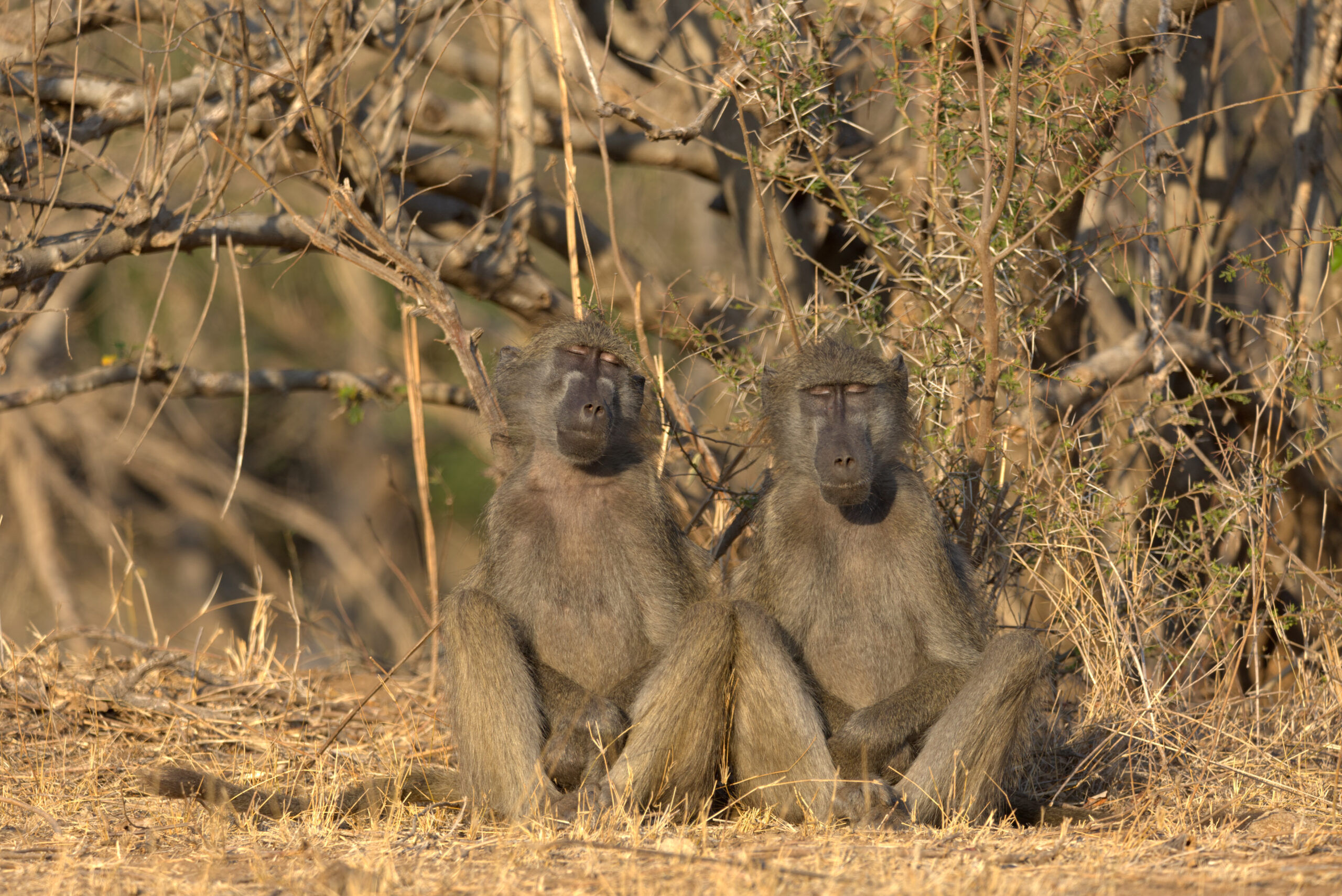
Olive baboon (Papio anubis)
-
Appearance: Medium-sized, with a coat often tinted greenish-brown.
-
Range: One of the most widespread baboons, found from West Africa across central regions into East Africa, including Tsavo.
-
Habitat: Highly adaptable—savanna, grassland, and woodland.
-
Diet & hunting: Omnivorous, often raiding crops but also capable hunters of small animals.
-
Fun facts:
-
Even if a low-ranking male makes a kill, he may have to surrender it immediately to a higher-ranking male.
-
In Laikipia, Kenya, olive baboons have been recorded using high-tension electricity pylons as novel sleeping sites. Scientists suggest this behaviour helps them avoid predators and reduce exposure to parasites.
-
-
Conservation status: Stable overall, but human–wildlife conflict is a persistent threat.
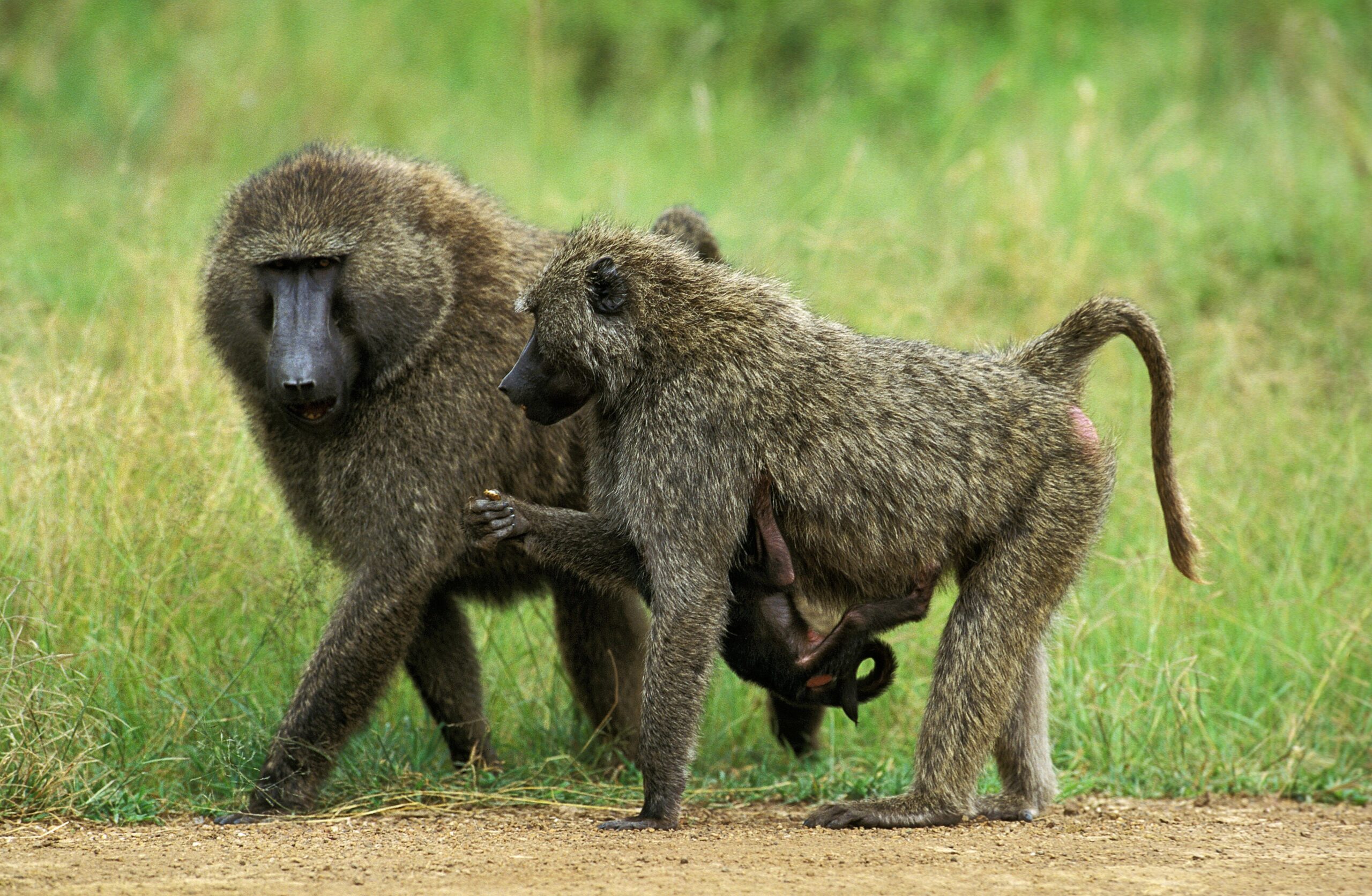
Yellow baboon (Papio cynocephalus)
-
Appearance: Slimmer build with a yellow-brown coat.
-
Range: Eastern Africa, from Kenya and Tanzania down to Mozambique.
-
Habitat: Favors savannas and open woodland.
-
Behaviour: Troops are large and social, with grooming playing a key role in maintaining bonds.
-
Diet: Omnivorous, feeding on fruits, seeds, insects, and small animals.
-
Conservation status: Populations remain widespread, but agricultural expansion reduces available habitat.
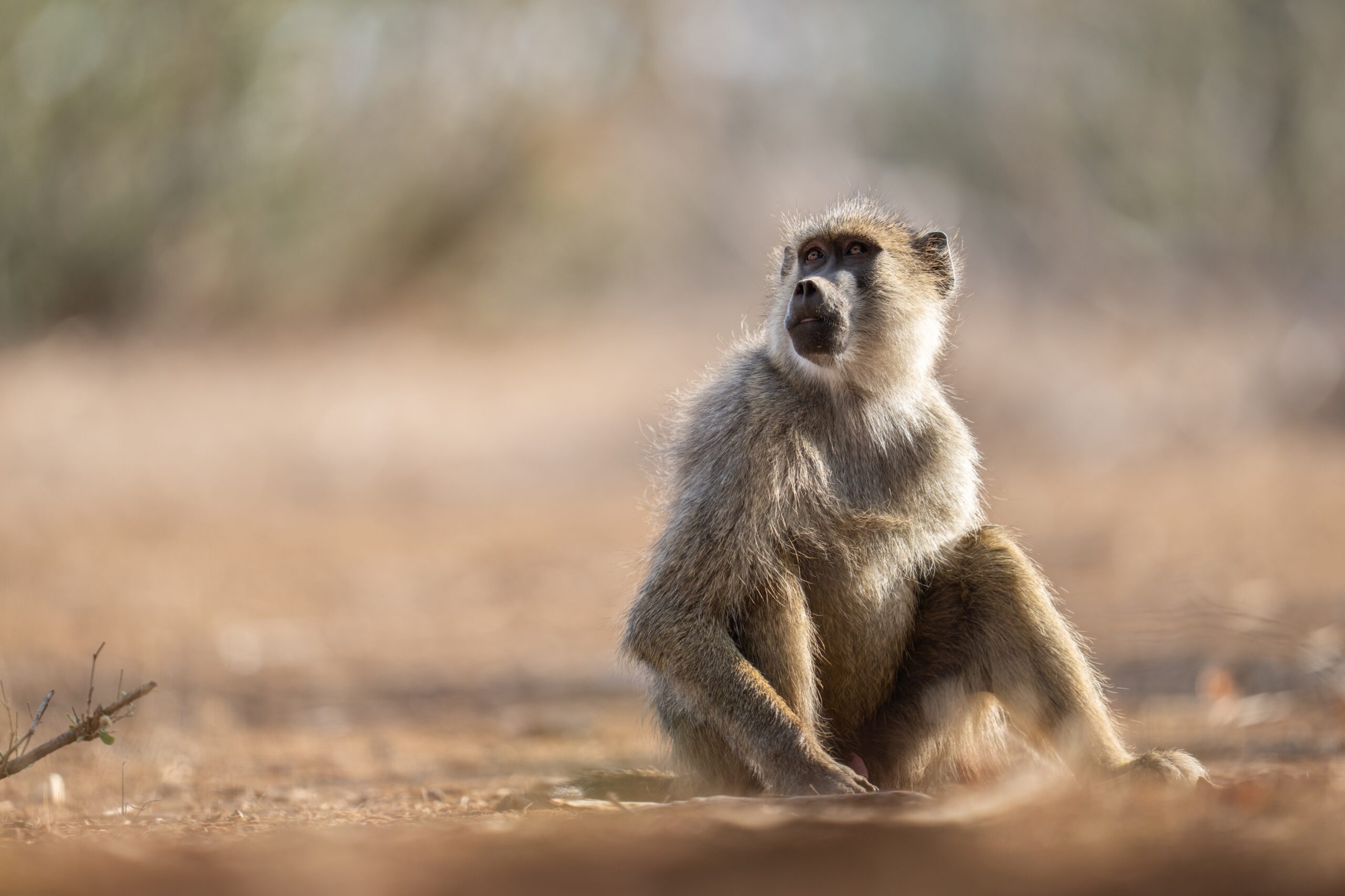
Hamadryas baboon (Papio hamadryas)
-
Appearance: Males have a striking silver-white mane, giving them a regal look.
-
Range: Found in the Horn of Africa (Ethiopia, Eritrea, Somalia) and across the Red Sea into parts of Yemen and Saudi Arabia.
-
Habitat: Rocky deserts and semi-arid areas.
-
Social structure: Unique among baboons—organized into “harems” with a dominant male and several females, nested within larger clans.
-
Conservation status: Near Threatened due to habitat loss and hunting pressure in parts of its range.
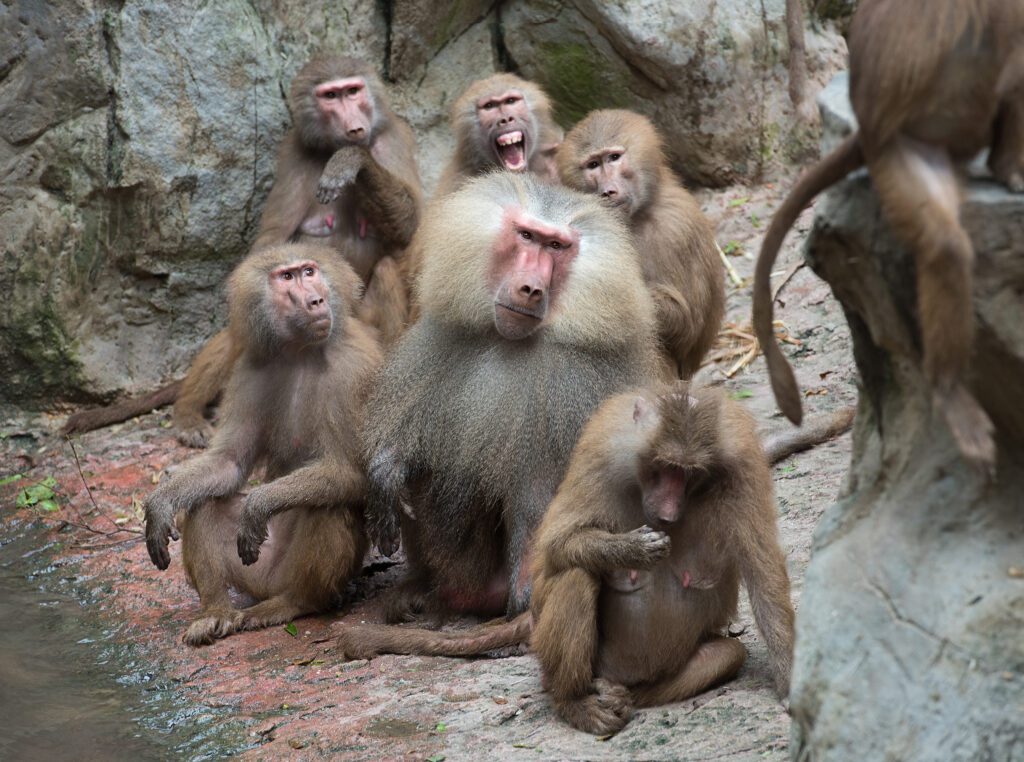
Guinea baboon (Papio papio)
-
Appearance: Slightly smaller, reddish-brown coat.
-
Range: Restricted to West Africa, including Senegal, Guinea, and Mali.
-
Habitat: Prefers dry savanna and gallery forests.
-
Behaviour: Less studied compared to other species, but lives in smaller, more cohesive groups.
-
Conservation status: Near Threatened; habitat loss and hunting are major concerns.
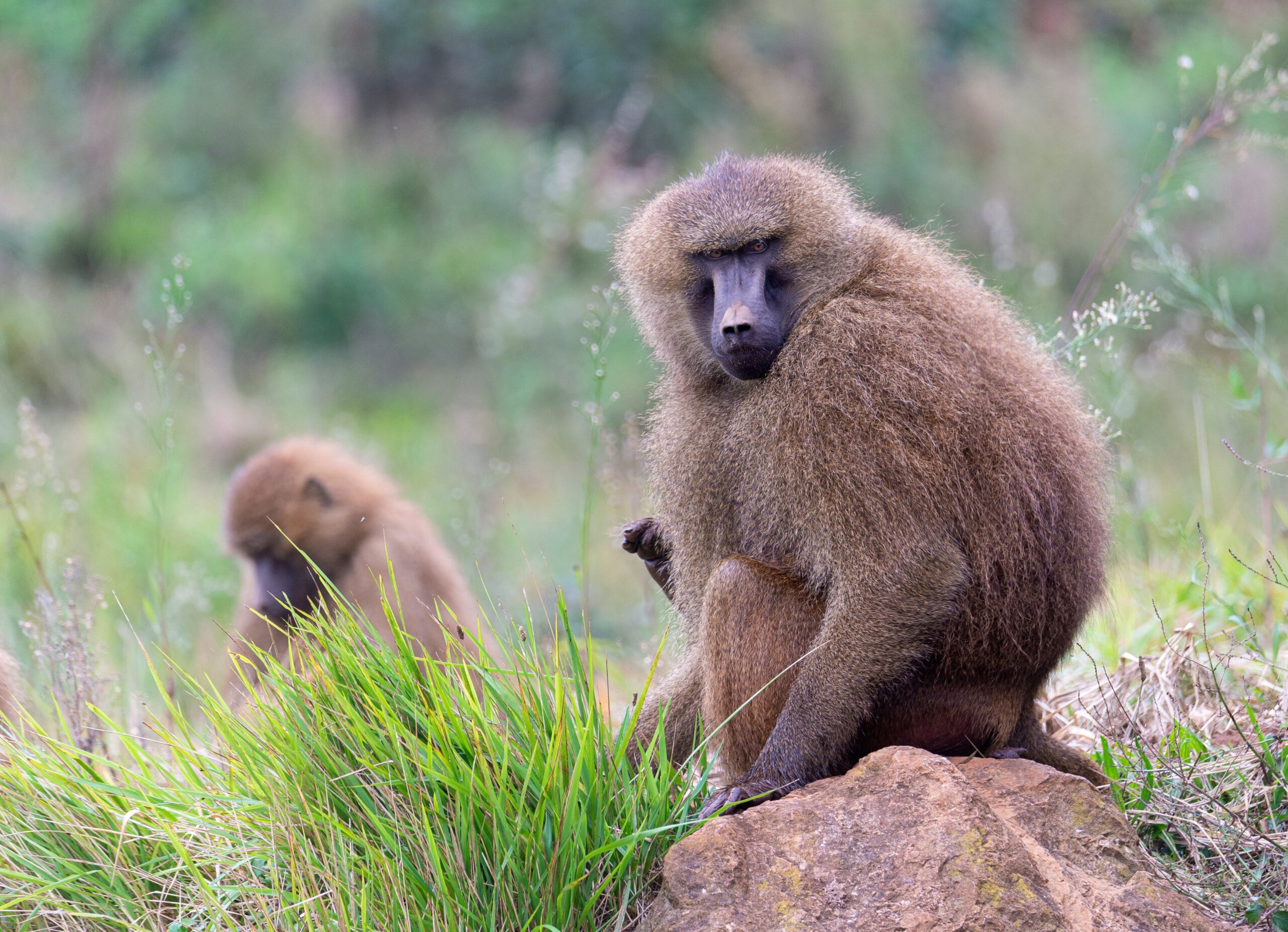
Kinda baboon (Papio kindae)
-
Appearance: Smallest baboon species, with a more gracile frame and lighter, golden-brown fur.
-
Range: Found mainly in central Africa—southern Democratic Republic of Congo, Zambia, and Angola.
-
Habitat: Woodlands and savannas.
-
Behaviour: Known for being less aggressive than other species, with more tolerant social interactions.
-
Conservation status: Least studied; currently listed as Least Concern but requires more monitoring.
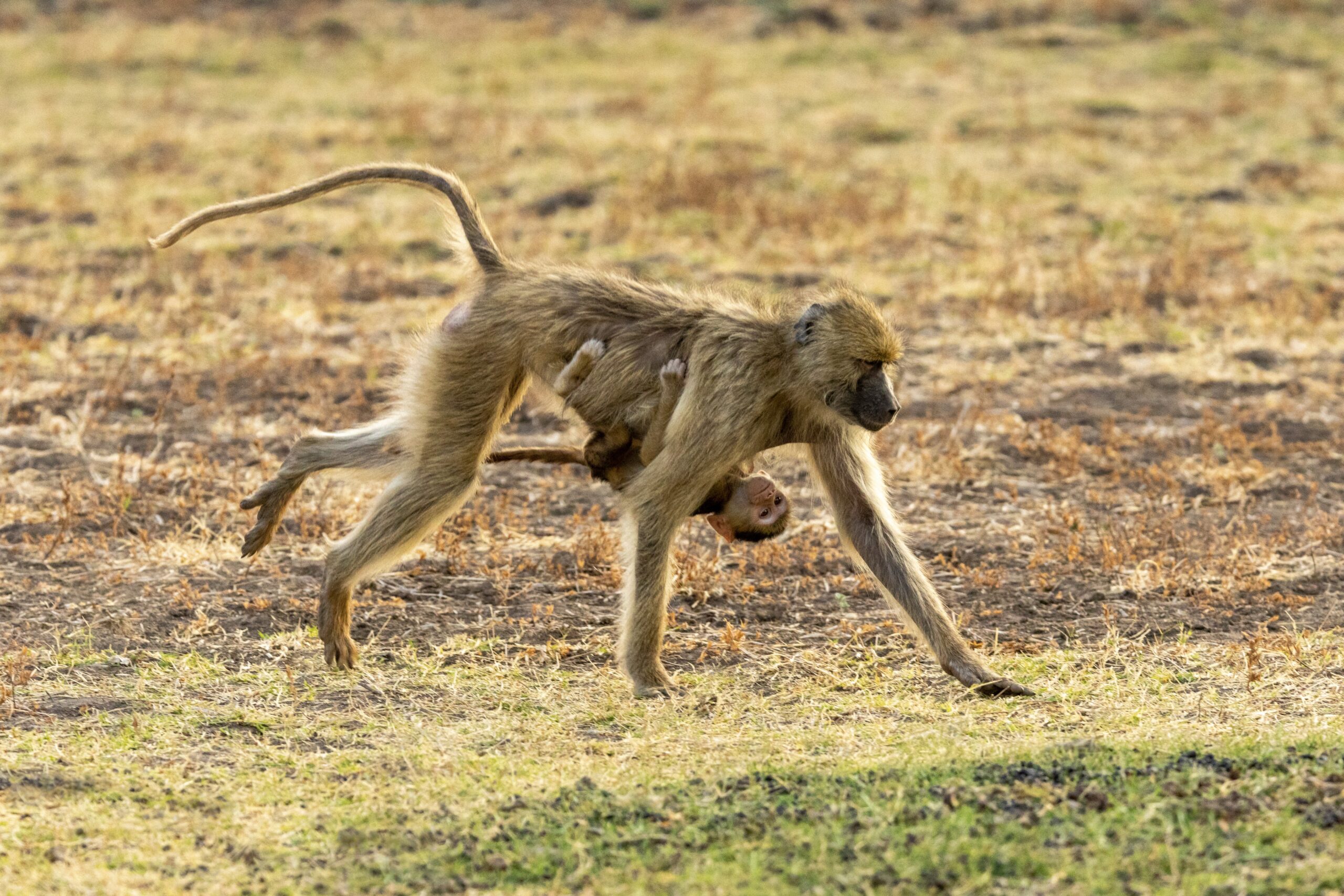
What do baboons eat?
Baboons are famously opportunistic eaters, which is why describing their diet is often easier by listing what they don’t eat rather than what they do. They are omnivores and highly adaptable, feeding on fruits, seeds, roots, grasses, leaves, and flowers, but also insects, small mammals, reptiles, and even birds’ eggs when the chance arises. Their foraging style makes them excellent survivors across diverse habitats—from savanna and woodland to semi-arid scrub
This dietary flexibility is one of the reasons baboons thrive in so many environments, but it also brings them into conflict with people when they raid crops or livestock. Their wide-ranging palate underlines just how adaptable—and sometimes mischievous—these primates can be.
How do baboons communicate?
Baboons are remarkably expressive animals, relying on a rich mix of vocalizations, facial signals, and body postures to maintain order in their troops. Among their most studied calls are barks, which form a graded continuum from tonal to harsh. Tonal barks, often called contact barks, are used when a baboon risks losing sight of the group, or when a mother and infant become separated, functioning almost like a “where are you?” call. At the other end of the spectrum are alarm barks—harsher, noisier sounds given in response to predators. Interestingly, baboons are even able to differentiate their alarm calls depending on the threat: calls directed at mammalian carnivores like leopards differ from those given for crocodiles. Between these two extremes exist intermediate forms, showing that baboon vocal signals are flexible and context-dependent. This nuanced communication system allows baboons not only to alert each other to danger but also to share specific information about the type of threat they face
Why are baboons bums red?
In many baboon species, the skin on the rump is hairless and becomes reddened, especially in females during reproductive cycles. The redness is caused by increased blood flow and swelling in the skin—a visual signal of fertility and sexual receptivity. The swelling and color change act as a cue to males, helping coordinate mating behavior.
In detail: the female’s perineal and rump skin gradually swell and redden during estrus (the fertile period), reaching peak coloration when she is most receptive. This phenomenon is sometimes called sexual swelling. It not only signals to males but also helps maintain social order—the most swollen females often have better mate‐access or social standing. The bare, vascularized skin allows the red tone to show more strongly.
Because browner skin or dense fur would mask these changes, the exposed skin and its responsiveness to hormonal cycles make the red rump a clear, honest signal.
Conservation Outlook
Although baboons are not generally considered endangered, they face growing pressures from habitat loss, hunting, and conflict with humans. As omnivores and highly social primates, their survival is closely linked to ecosystem health. Protecting landscapes like Tsavo ensures baboons, alongside elephants, lions, and countless other species, continue to play their roles in Africa’s natural heritage.

